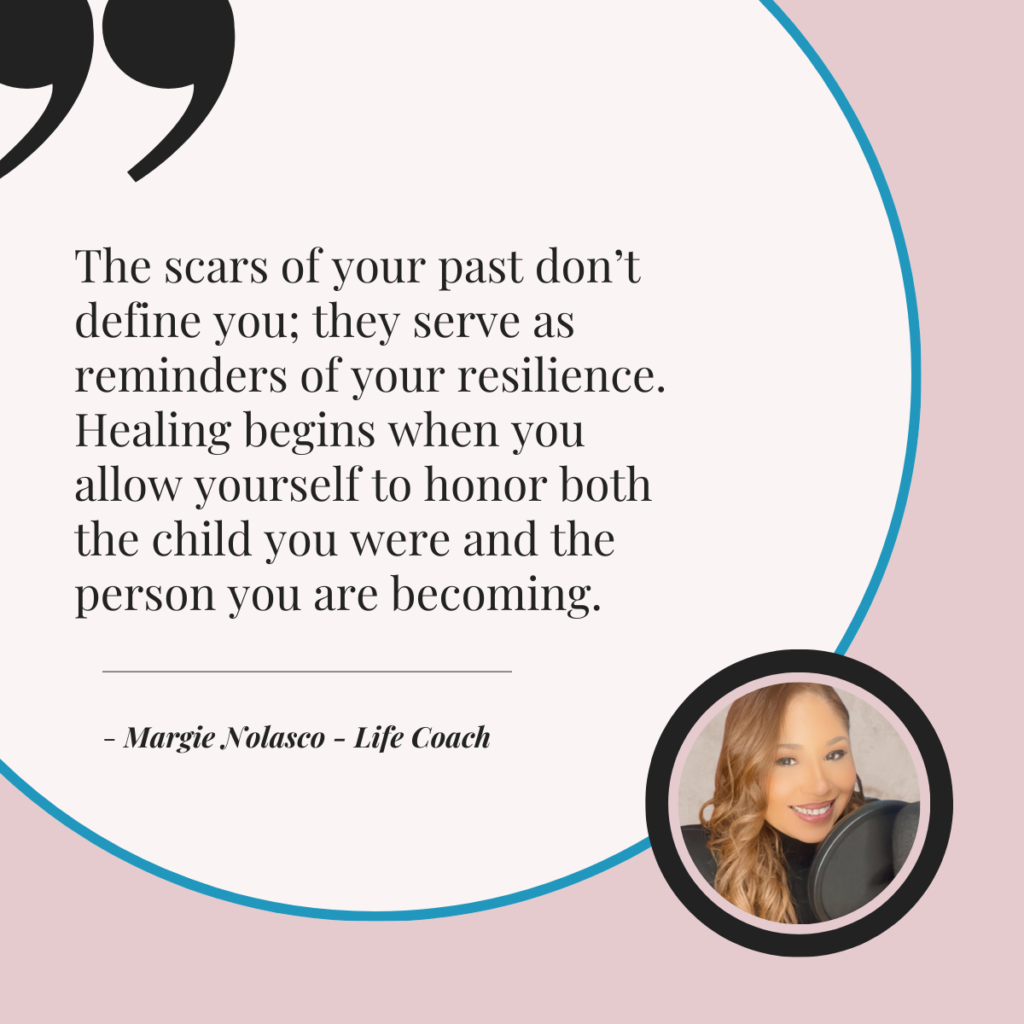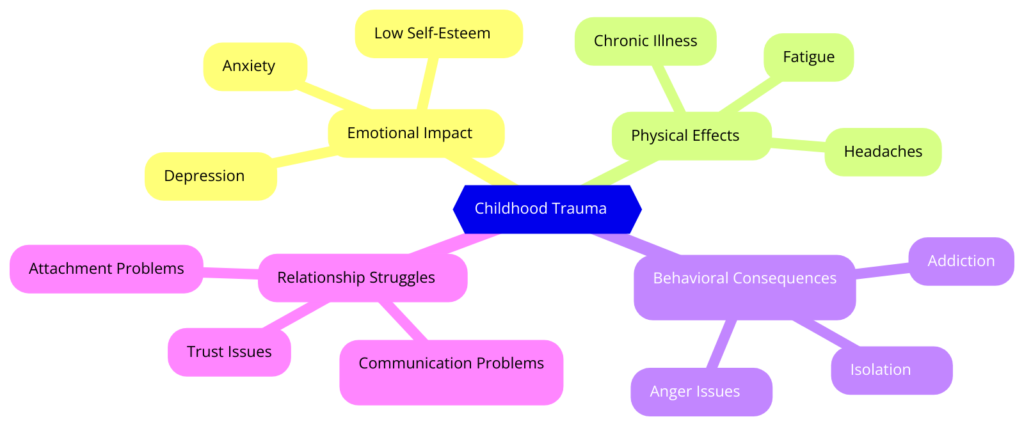Childhood is often seen as a time of innocence, discovery, and growth. However, for many, it can also be a period marked by emotional, physical, or psychological trauma. The impacts of these early life experiences can reverberate far into adulthood, shaping behaviors, beliefs, and overall well-being. Understanding childhood trauma and its lasting effects is a vital step in healing and moving forward with a more empowered life. This article delves into what childhood trauma is, how it manifests in adult life, and steps to start the healing journey.

What Is Childhood Trauma?
Childhood trauma occurs when a child experiences an event or series of events that overwhelm their ability to cope. These experiences can be acute, such as a single instance of physical abuse or the loss of a loved one, or chronic, like ongoing neglect or living in an unsafe environment. Trauma disrupts a child’s sense of safety, trust, and stability, often leading to deep emotional wounds.
Common forms of childhood trauma include:
- Abuse: Physical, emotional, or sexual abuse.
- Neglect: Not having basic emotional, physical, or psychological needs met.
- Divorce or separation: When parents split up, it can create insecurity.
- Witnessing violence: Seeing domestic abuse, community violence, or even war.
- Loss: The death of a loved one or sudden separation from caregivers.
- Illness or injury: Serious illness or injury can create lasting fear and helplessness.
While these experiences might vary in intensity, their effects can have lasting consequences on an individual’s emotional, mental, and physical health.
How Childhood Trauma Shapes Your Adult Life
Our childhood experiences lay the foundation for how we view the world, others, and ourselves. When those experiences involve trauma, they can significantly distort our perceptions, behaviors, and relationships. The following flowchart offers a visual representation of the potential impacts childhood trauma can have on emotional, relational, behavioral, and physical aspects of life:

This chart highlights the far-reaching effects of childhood trauma, with examples of how it influences various aspects of adult life. Now, let’s dive into these areas in more detail.
1. Relationship Difficulties
Children learn about relationships through their interactions with their caregivers. When those relationships are marked by neglect, abuse, or instability, adults may struggle to form healthy, trusting bonds. They might:
- Have difficulty trusting others.
- Feel a deep fear of abandonment or rejection.
- Overcompensate in relationships, becoming people-pleasers or overly controlling.
- Be drawn to toxic, codependent, or abusive relationships, unknowingly repeating past patterns.
2. Emotional Regulation Challenges
Children who experience trauma often lack the tools to manage intense emotions, which can carry over into adulthood. This may lead to:
- Difficulty regulating anger, sadness, or fear.
- Experiencing overwhelming feelings of shame or guilt.
- Turning to unhealthy coping mechanisms like addiction, avoidance, or emotional withdrawal.
3. Low Self-Esteem and Self-Worth
Children who endure trauma may internalize harmful beliefs about themselves, feeling unworthy, inadequate, or unlovable. These feelings can follow them into adulthood, manifesting as:
- A deep sense of unworthiness or “not being enough.”
- Self-sabotage in personal or professional areas.
- A harsh inner critic that diminishes any sense of accomplishment.
4. Chronic Stress and Anxiety
Childhood trauma can prime the nervous system to remain in a heightened state of alert, leading to chronic stress and anxiety. Adults who experienced trauma as children might:
- Be overly sensitive to perceived threats.
- Struggle with anxiety disorders or PTSD.
- Experience chronic health conditions linked to stress, like heart disease or autoimmune disorders.
5. Perfectionism and Overachievement
Some adults overcompensate for feelings of inadequacy caused by childhood trauma by becoming perfectionists or high achievers. While this can lead to success, it often comes at the cost of their well-being, with:
- Constant pressure to be perfect.
- Fear of failure or rejection driving their actions.
- Burnout from setting unrealistic expectations.
6. Fear of Vulnerability
Opening up and showing vulnerability can be terrifying for someone who has experienced childhood trauma. The fear of being hurt again may lead adults to:
- Build emotional walls or become distant in relationships.
- Struggle with deepening connections with others.
- Avoid seeking help, fearing judgment or rejection.
- Steps to Begin the Healing Process
Healing from childhood trauma is a long and personal journey, but it is possible.
Here are some steps that can help individuals move toward recovery:
1. Acknowledge the Trauma
The first step in healing is recognizing the trauma and its impact on your life. Denying or minimizing the trauma may prevent you from moving forward, while acknowledgment creates space for healing to begin.
2. Seek Therapy or Professional Support
Professional therapy, particularly trauma-informed therapies like EMDR (Eye Movement Desensitization and Reprocessing), CBT (Cognitive Behavioral Therapy), or somatic therapy, can be incredibly beneficial. A therapist can help you process the trauma, learn healthier coping mechanisms, and rebuild a sense of safety.
3. Practice Self-Compassion
Adults who experienced childhood trauma are often hard on themselves. They might feel like they should “just get over it” or that they’re “too broken.” Learning to practice self-compassion means treating yourself with kindness and understanding. It’s important to remember that healing takes time and patience.
4. Build Healthy Relationships
Focus on cultivating relationships with people who are supportive, trustworthy, and understanding. Learning to trust others again and setting healthy boundaries are crucial parts of healing.
5. Develop Mindfulness Practices
Mindfulness, meditation, and breathwork can help calm an overactive nervous system and keep you grounded in the present. These practices reduce anxiety and stress, making it easier to manage overwhelming emotions.
6. Rewrite Your Narrative
Part of healing from trauma involves reframing your life story. Rather than seeing yourself as a victim of your past, embrace the possibility of growth and resilience. Journaling, creative expression, or working with a coach can help you reframe your experiences and visualize a new future.
7. Focus on Your Physical Health
Trauma doesn’t just affect the mind; it also impacts the body. Incorporating physical movement like yoga, stretching, or regular exercise can help release stored tension and trauma from the body. Engaging in healthy eating, proper sleep, and self-care are essential components of healing.
Final Thoughts: Reclaiming Your Power
Childhood trauma is not a life sentence. While it shapes many aspects of adulthood, it is possible to reclaim your power, heal from your past, and build a life that aligns with your true essence. By acknowledging the trauma, seeking support, and actively working on self-care and healing, you can move forward with strength, resilience, and grace.
Healing is a journey, not a destination, and every step you take brings you closer to the life you deserve. Embrace that journey with compassion and hope, knowing that you are capable of transformation and growth.
Want more guidance on healing and personal development? At Honor Your Essence, we specialize in helping women overcome limiting beliefs and create empowered, authentic lives. Connect with us for coaching, resources, and more!